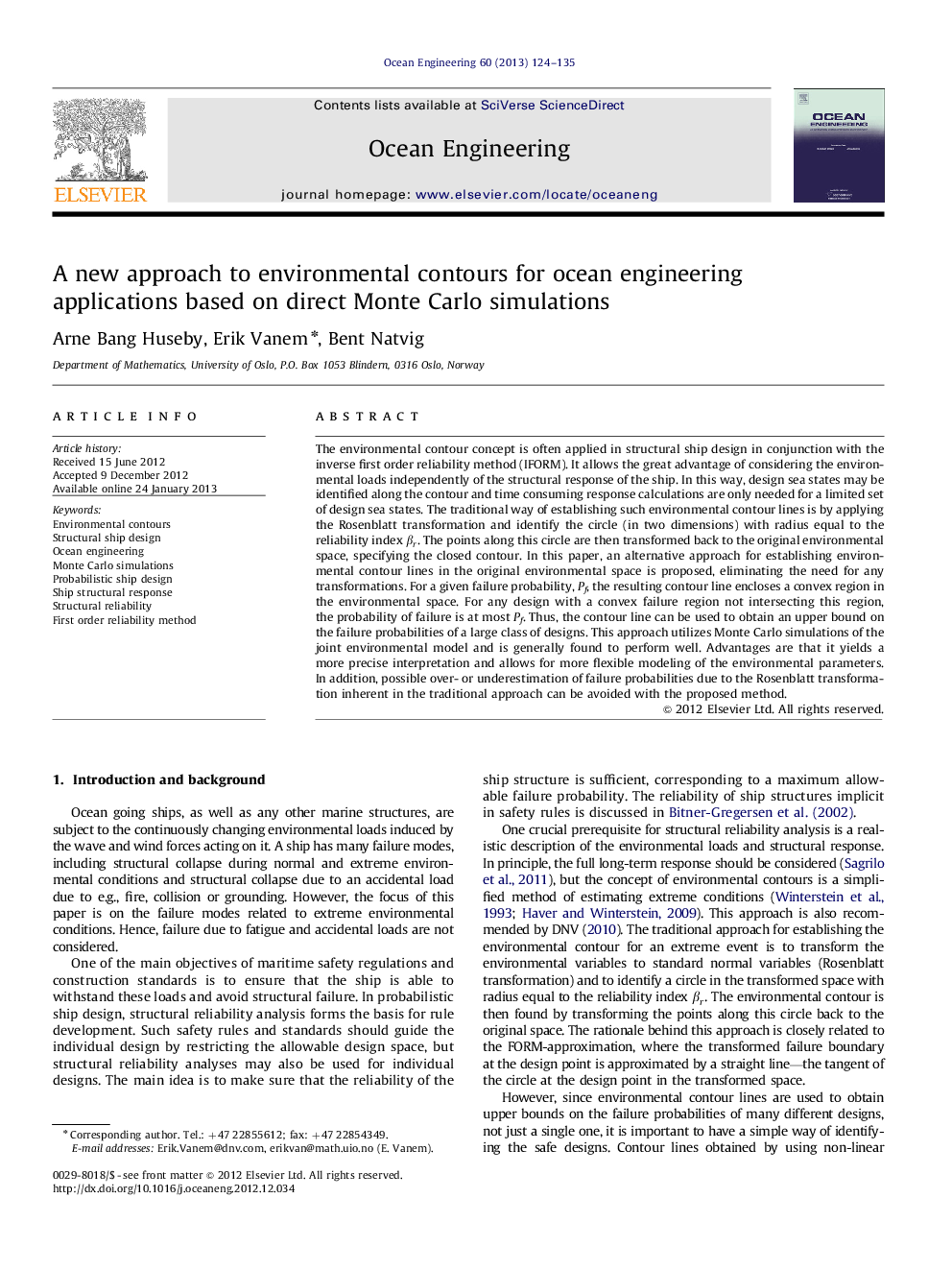| Article ID | Journal | Published Year | Pages | File Type |
|---|---|---|---|---|
| 1726017 | Ocean Engineering | 2013 | 12 Pages |
The environmental contour concept is often applied in structural ship design in conjunction with the inverse first order reliability method (IFORM). It allows the great advantage of considering the environmental loads independently of the structural response of the ship. In this way, design sea states may be identified along the contour and time consuming response calculations are only needed for a limited set of design sea states. The traditional way of establishing such environmental contour lines is by applying the Rosenblatt transformation and identify the circle (in two dimensions) with radius equal to the reliability index βrβr. The points along this circle are then transformed back to the original environmental space, specifying the closed contour. In this paper, an alternative approach for establishing environmental contour lines in the original environmental space is proposed, eliminating the need for any transformations. For a given failure probability, Pf, the resulting contour line encloses a convex region in the environmental space. For any design with a convex failure region not intersecting this region, the probability of failure is at most Pf. Thus, the contour line can be used to obtain an upper bound on the failure probabilities of a large class of designs. This approach utilizes Monte Carlo simulations of the joint environmental model and is generally found to perform well. Advantages are that it yields a more precise interpretation and allows for more flexible modeling of the environmental parameters. In addition, possible over- or underestimation of failure probabilities due to the Rosenblatt transformation inherent in the traditional approach can be avoided with the proposed method.
► A new approach for establishing environmental contours is proposed. ► Based on direct Monte Carlo simulations without the need for transformations. ► Resulting contours are more intuitively interpretable and have the desired properties. ► Contours are comparable to traditional approaches, but has some advantages.
